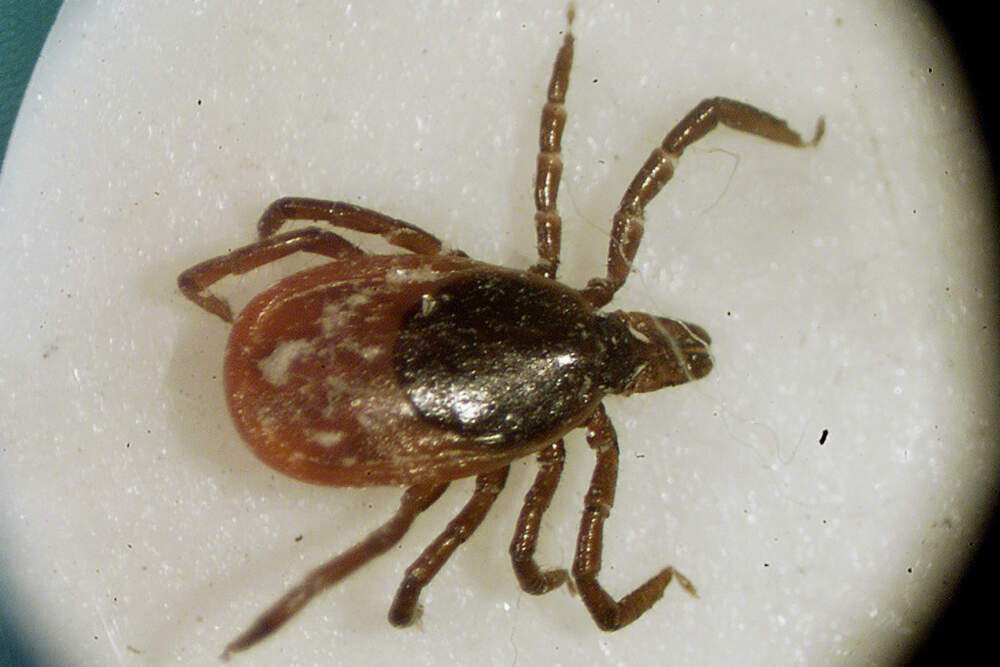Advertisement
Tick bites are sending more people in the Northeast to the emergency room this year

Data from the U.S. Centers for Disease Control and Prevention’s online tick tracker shows that, in the Northeast, visits to the Emergency Department for tick bites are up more than 30% from last year. This means people enjoying the outdoors need to be vigilant, experts say.
“The best way to avoid getting sick is to just avoid getting bit by a tick in the first place,” said Dr. Grace Marx, medical director with the CDC's Division of Vector-borne Diseases. “Being aware when ticks are active, and taking the right steps to prevent tick bites in the first place, is really the way to go.”
The CDC’s online, interactive tool allows users to track and visualize tick-borne disease data in the United States. A user can answer a series of questions covering topics such as tick attachment time and symptoms and then, based on the user's responses, the tool provides information about recommended actions and resources.
Take additional precautions
To reduce chances of being bitten by a tick, the CDC recommends using EPA-registered insect repellents such as DEET and checking body parts and clothing for ticks after being exposed to potentially tick infested areas, including the backyard.
“When you come inside, take a shower soon after you come indoors or within a couple of hours after coming indoors to reduce your risk of getting Lyme disease and other tick-borne diseases,” Marx said.
When a tick is found attached to the skin, she said removing it as soon as possible is key to preventing disease.
“You can just do this at home with a plain set of fine tipped tweezers,” Marx said. “Different pathogens transmit at different times. For example, for Lyme disease, which is the most common tick borne disease in the United States, it will take at least 24 hours for that bacteria to transmit. But there are other pathogens that can transmit in much shorter periods of time, including some on the skin for just minutes of attachment.”
Another tool to protect against ticks, according to the CDC, is treating clothing with a tick-repellent chemical containing 0.5% permethrin, which typically stays active through several washings.
Seeking medical attention after a tick bite
Of all the tick-borne diseases, Lyme disease is by far, the most common, representing upwards of 80% or more of all tick-borne diseases in the U.S., according to the CDC.
“There are other tick-borne diseases as well,” said Dr. Marx, “and those include things like ehrlichiosis, anaplasmosis, tularemia, Powassan virus disease, so there really is a whole number of them.”
“When you get bit by a tick, it's important to come in to your health care provider with information. And if you get sick after a tick bite, go in as soon as possible for evaluation,” Marx said.
Symptoms of Lyme disease and other tick-borne illnesses may develop within a few weeks after a tick bite. It’s important to watch out for signs of a “bullseye rash” on the skin, as well as fever, nausea, headache and other symptoms that mimic influenza and arthritis, Marx said.
This story is a production of the New England News Collaborative. It was originally published Connecticut Public Radio.